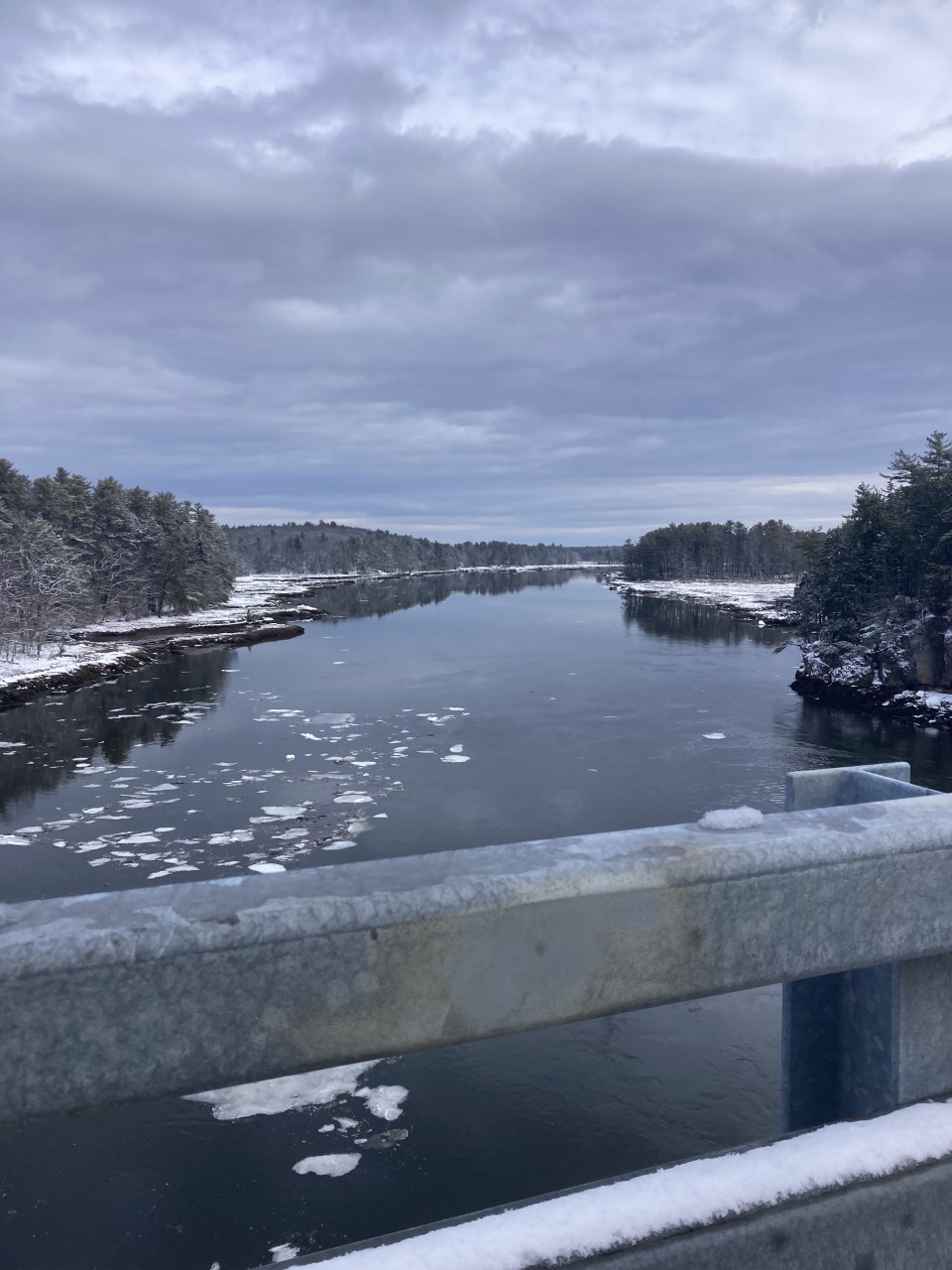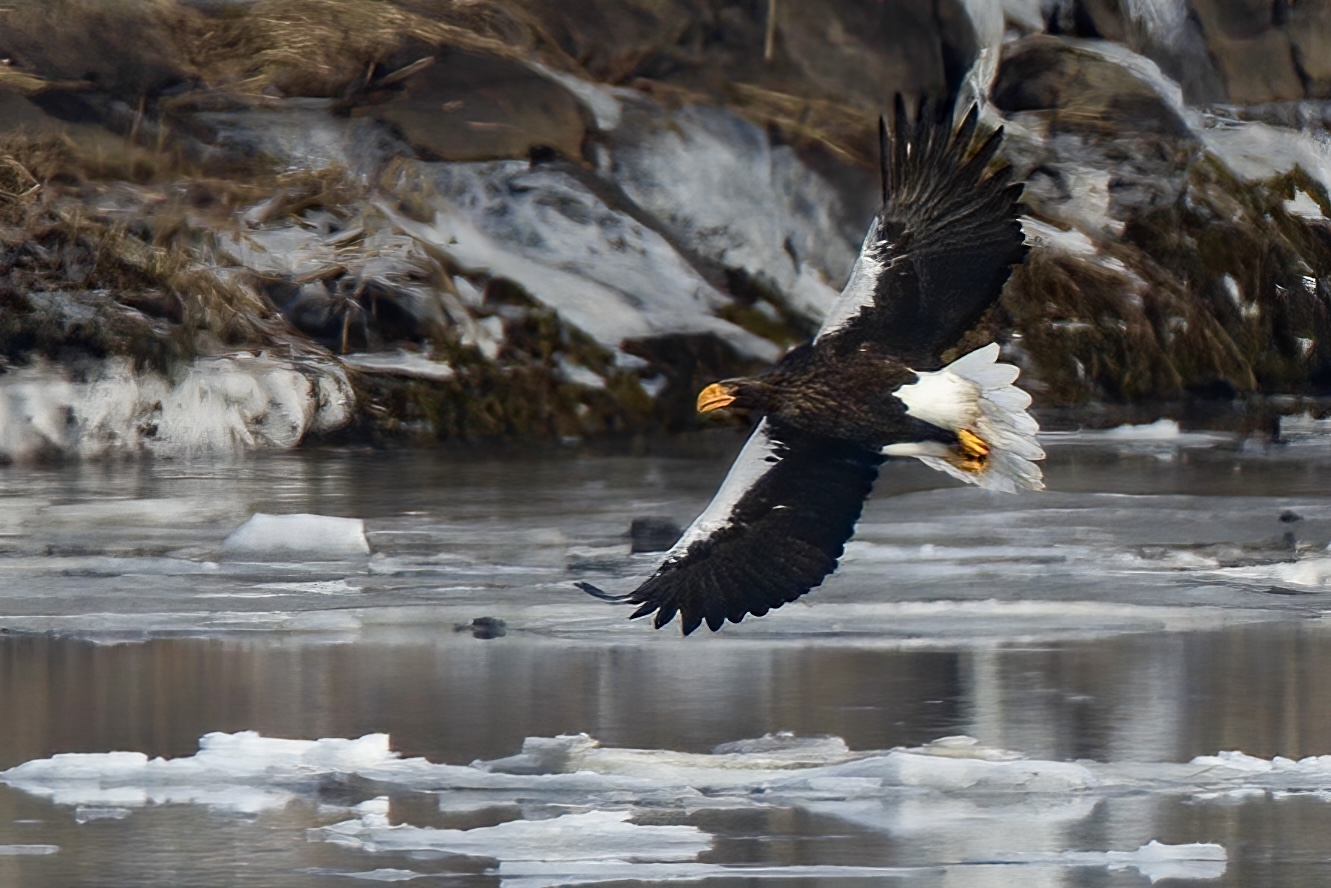A Stellar Opportunity: Rare siberian bird 20 minutes from campus
February 10, 2023
 Sophia Schaefer
Sophia SchaeferThe Steller’s sea eagle is back, and people from all over the country are lining Midcoast Maine’s rural roads and bridges—armed with scopes and cameras—in hopes of catching a glimpse of this rare bird.
Attracting throngs of people, the Steller’s sea eagle, a black and white bird native to Eastern Russia, was spotted roosting in pines north of the Route 127 Back River Bridge between Arrowsic and Georgetown on Saturday. For the Bowdoin community, the once-in-a-lifetime chance to see this bird is only 20 minutes away.
The Steller’s sea eagle, nicknamed Stella, visited last year and has returned to the exact same location.
“I am really excited to hear that it is back,” Visiting Assistant Professor of Chemistry and Environmental Studies Brandon Tate said. “I haven’t had a chance to go see it yet since it has returned to Maine, but I do hope to, maybe this weekend.”
The Steller’s sea eagle is the world’s largest sea eagle, with an eight-foot wingspan and females weighing as much as 20 pounds. There are fewer than 4,000 left in the world, and the bird’s predicted age is four- or five-years-old, while its gender is unknown.
 Matt Felperin
Matt Felperin
Silas Brown ’24 heard about the Steller’s sea eagle from a teammate. Brown initially declined an invitation to go see the bird because he had a paper due.
“I was like, ‘no way, I can’t come.’ But then I was reading more about it and then I was like, ‘oh, I should go, I’m never going to see this again,’” Brown said. “And then I joined the GroupMe, and I saw ‘I’m coming from Tennessee, I’m coming from Connecticut,’ and I was like, ‘Oh, I am 20 minutes away—I have to go see it.’”
With his friends, Brown drove up Route 1, went down a dirt road off Route 127 and hiked about a quarter mile through the woods to the riverbank in Flying Point Preserve, which was lined with birders.
“I did not know what to expect,” Brown said. “I could tell people were interested in it. You can tell immediately: there were cars lined all across the road, we drove past where it had been roosting the night before and there were people there even though you couldn’t see the eagle from there yet. They were waiting for it to come back.”
As well as the riverbank in Flying Point Preserve, the bridge on Route 127 is a popular viewing spot. The eagle frequented these same spots in March, 2022, the last time it was in the area, before turning up in Nova Scotia on April 1. It is often roosting in the pines, and spotting it usually requires a scope, binoculars or high-quality camera.
Birders predict it will follow a similar migratory cycle this year.
“I suspect it will probably stay here about the same length of time it did last year,” Tate said. “It sort of makes sense what it is doing here—sort of.”
Pyul Holbert, 46, is a birder who traveled from New York City to see Stella. It is the first bird Holbert has chased.
“It is a very rare bird, and it is going extinct in the next 40 years, so I really wanted to see it,” Holbert said. “I just started birding last spring, so this is a really great bird to chase.”
An experienced birder, Bill Vanderpoel, 69, travels often for birding. He visited from Denver, Colo., to see the eagle with his brother, John. John recently published a book, “Full Chase Mode: Big Year of Birding in North America.” The two missed Stella by a day and a half last year, so this year, they made sure to be timely.
“It is truly a unique, renowned bird, very few like it,” Vanderpoel said. “Last January there was a Bat Falcon down in the Rio Grande that drew thousands of birders. When these unique birds come in, it is a catalyst to go see them and then you see other things that you wouldn’t normally see.”
Maine is familiar with tourists but not at this time of year. Birders have created very active Facebook groups and GroupMe chats about the bird’s whereabouts and have shared information about lodging and restaurants in the area.
Joanne Morrissey, 58, traveled from West Hartford, Conn., with her husband Jack to see the eagle. The couple has been birding since 1992 and travels frequently.
“What’s great is you never know what you may see,” said Morrissey. “So, it is always worth going.”

Comments
Before submitting a comment, please review our comment policy. Some key points from the policy: